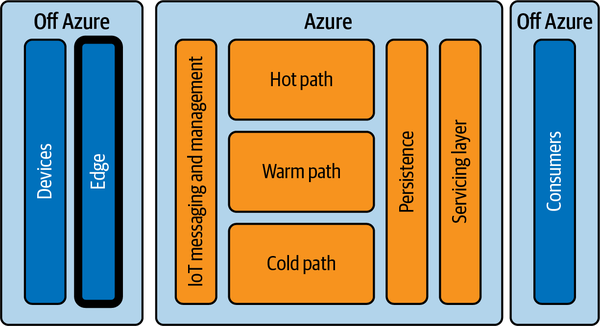Chapter 6. Life on the Edge
It seems everything wants to be “cutting edge,” “bleeding edge,” or “leading edge” nowadays. So, when I first heard of “edge computing,” my eyes rolled. I thought it was a marketing term used to discuss new computing technology, but I couldn’t have been more wrong. It had nothing to do with its newness and everything to do with where it sits relative to other computing models: between more traditional on-premises models and the cloud. Its location in this context is still on premises, but it is at the “edge” of on-premises computing, where it touches the internet and the cloud. Therefore the “edge” on the IoT Landscape is between devices and the cloud (which is generally everything on the right side of the landscape), as seen in Figure 6-1.

Figure 6-1. The edge in the IoT Landscape
But edge computing is more than location. It’s not only about where the computing is done but also about how the computing is done. Edge computing occupies the same relative space as perimeter computing for network security with things like reverse proxies and web application firewalls (WAFs). While edge computing does some of these, it is unique. To describe it, it’s best to look at where edge computing came from.
What most people think of as the modern cloud started around 2008 with big players like AWS and Azure. Online hosting for web apps and co-location services existed ...
Get Architecting IoT Solutions on Azure now with the O’Reilly learning platform.
O’Reilly members experience books, live events, courses curated by job role, and more from O’Reilly and nearly 200 top publishers.

